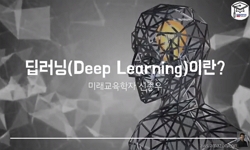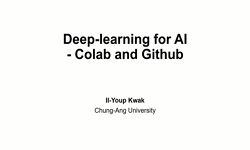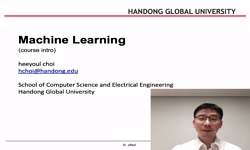In order to maximize the image quality when using existing image contents in the latest display devices, it is necessary to improve the resolution and intensity of the images. In this paper, we propose an efficient deep neural network to restore the i...
http://chineseinput.net/에서 pinyin(병음)방식으로 중국어를 변환할 수 있습니다.
변환된 중국어를 복사하여 사용하시면 됩니다.
- 中文 을 입력하시려면 zhongwen을 입력하시고 space를누르시면됩니다.
- 北京 을 입력하시려면 beijing을 입력하시고 space를 누르시면 됩니다.
https://www.riss.kr/link?id=A106169539
-
저자
Keunsoo Heo (The Catholic University of Korea) ; Yunju Kim (The Catholic University of Korea) ; Changwoo Lee (The Catholic University of Korea)

- 발행기관
- 학술지명
- 권호사항
-
발행연도
2019
-
작성언어
English
- 주제어
-
등재정보
KCI등재
-
자료형태
학술저널
-
수록면
121-125(5쪽)
-
KCI 피인용횟수
1
- DOI식별코드
- 제공처
-
0
상세조회 -
0
다운로드
부가정보
다국어 초록 (Multilingual Abstract)
In order to maximize the image quality when using existing image contents in the latest display devices, it is necessary to improve the resolution and intensity of the images. In this paper, we propose an efficient deep neural network to restore the image intensity when there are too few bits per pixel to provide more intensity. We investigate an efficient implementation and training method for U-net to maximize the performance of restoring image intensity. We show that we can significantly improve the perceptual quality of the restored image by using VGG loss as well as MSE loss to train U-net. The perceptual loss of images can be efficiently dealt with by using VGG loss. The convergence of the proposed method is analyzed, and extensive computer simulations show that the proposed method significantly improves the perceptual quality of the restored image.
목차 (Table of Contents)
- Abstract
- 1. Introduction
- 2. Restoration of Image Intensity and Deep Learning
- 3. Proposed Method for Restoring Image Intensity Based on Deep Learning
- 4. Performance Evaluation
- Abstract
- 1. Introduction
- 2. Restoration of Image Intensity and Deep Learning
- 3. Proposed Method for Restoring Image Intensity Based on Deep Learning
- 4. Performance Evaluation
- 5. Conclusion
- References
참고문헌 (Reference)
1 "http://cocodataset.org"
2 K. Simonyan, "Very deep convolutional networks for large-scale image recognition" 2015
3 O. Ronneberger, "U-Net:Convolutional networks for biomedical image segmentation" 234-241, 2015
4 H. Dong, "TensorLayer: A versatile library for efficient deep learning development" 1201-1204, 2017
5 K. S. Heo, "Restoration of image intensity using deep learning" 2019
6 C. Ledig, "Photo-realistic single image super-resolution using a generative adversarial network" 105-114, 2017
7 J. Johnson, "Perceptual losses for real-time style transfer and superresolution" 694-711, 2016
8 W. Shi, "Is the deconvolution layer the same as a convolutional layer?"
9 C. Dong, "Image super-resolution using deep convolutional networks" 38 (38): 295-307, 2016
10 X. Hou, "Image companding and inverse halftoning using deep convolutional neural networks"
1 "http://cocodataset.org"
2 K. Simonyan, "Very deep convolutional networks for large-scale image recognition" 2015
3 O. Ronneberger, "U-Net:Convolutional networks for biomedical image segmentation" 234-241, 2015
4 H. Dong, "TensorLayer: A versatile library for efficient deep learning development" 1201-1204, 2017
5 K. S. Heo, "Restoration of image intensity using deep learning" 2019
6 C. Ledig, "Photo-realistic single image super-resolution using a generative adversarial network" 105-114, 2017
7 J. Johnson, "Perceptual losses for real-time style transfer and superresolution" 694-711, 2016
8 W. Shi, "Is the deconvolution layer the same as a convolutional layer?"
9 C. Dong, "Image super-resolution using deep convolutional networks" 38 (38): 295-307, 2016
10 X. Hou, "Image companding and inverse halftoning using deep convolutional neural networks"
11 R. P. Kovaleski, "High-quality reverse tone mapping for a wide range of exposures" 2014
12 G. Eilertsen, "HDR image reconstruction from a single exposure using deep CNNs" 36 (36): 2017
13 G. Huang, "Densely connected convolutional networks" 4700-4708, 2017
14 K. He, "Deep residual learning for image recognition" 770-778, 2016
15 D. Kingma, "Adam: A method for stochastic optimization" 2015
동일학술지(권/호) 다른 논문
-
Tone-mapped High Dynamic Range Image Restoration with a Mask-applied Neural Network
- 대한전자공학회
- Gwon Hwan An
- 2019
- KCI등재
-
Estimation of Illumination Spectrum from a Hyperspectral Image
- 대한전자공학회
- Ji-Won Lee
- 2019
- KCI등재
-
Audio Feature Extraction for Effective Emotion Classification
- 대한전자공학회
- Euihwan Han
- 2019
- KCI등재
-
- 대한전자공학회
- Rachanart Soontornvorn
- 2019
- KCI등재
분석정보
인용정보 인용지수 설명보기
학술지 이력
| 연월일 | 이력구분 | 이력상세 | 등재구분 |
|---|---|---|---|
| 2023 | 평가예정 | 해외DB학술지평가 신청대상 (해외등재 학술지 평가) | |
| 2020-01-01 | 평가 | 등재학술지 유지 (해외등재 학술지 평가) |  |
| 2018-05-01 | 평가 | SCOPUS 등재 (기타) |  |
| 2016-01-01 | 평가 | 등재후보학술지 선정 (신규평가) |  |
| 2014-01-21 | 학회명변경 | 영문명 : The Institute Of Electronics Engineers Of Korea -> The Institute of Electronics and Information Engineers |
학술지 인용정보
| 기준연도 | WOS-KCI 통합IF(2년) | KCIF(2년) | KCIF(3년) |
|---|---|---|---|
| 2016 | 0 | 0 | 0 |
| KCIF(4년) | KCIF(5년) | 중심성지수(3년) | 즉시성지수 |
| 0 | 0 | 0 | 0 |




 DBpia
DBpia






